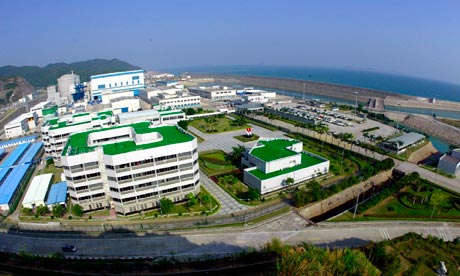Since Evan got me started on transportation I figure we might as well stick with it for awhile. This from Mother Earth News. The obvious suspects are the Leaf, the Volt and the Prius. You will have to go read the article for their reveiws but here is the lead in.
http://www.motherearthnews.com/2011-best-green-cars-zm0z11zroc.aspx
Best Green Cars, 2011
The hybrid car that changed the world • The electric cars that will change the world • $1,000s in rebates and incentives • 40 mpg for the long haul • All-electric daily driving • 38 mpg with smiles • $2.75 to recharge • No range anxiety • 35 mpg with zip
June/July 2011
By John Rockhold
Back in 2000, Toyota released the Prius, a gasoline-electric hybrid, in the United States. That year, the average price of gas was just $1.49, yet here was a quirky little car that touted 40-plus mpg. A 2004 redesign gave the Prius even better mpg and its iconic shape, and it became so popular Toyota couldn’t keep up with demand. Today, the Prius is the most successful hybrid by far and has basically come to define “green car.” It’s no surprise, then, that the Prius is back among the annual MOTHER EARTH NEWS Best Green Cars.
Have you ever wondered what the heck “Prius” actually means? It’s a Latin word meaning “to go before.” Toyota chose it to signify that the car and its hybrid technology would be a precursor of the energy-efficient cars of the future?—?which has certainly proved true, given the numerous hybrids released by Toyota and others. However, it’s the two all-electric cars on our 2011 list that herald the next revolution in green transportation.
Yes, practical and accessible electric cars from major automakers are finally here. Neither electric car is perfect, but the Prius wasn’t either back in 2000. Of the many features that make the Chevrolet Volt and Nissan Leaf compelling, their driving range and cost to own are what may make them most appealing. The Leaf has a range of about 100 miles, depending on driving conditions. The Volt has a shorter all-electric range, but uses a gas engine to power its two electric motors when needed for a total range of about 375 miles.
Sick of paying about $50 to fill the tank of your gas car? How does $2 to $3 sound? Given the national average cost of electricity (11 cents per kilowatt-hour), that’s about what you would pay to “fill up” an electric car by recharging it overnight. And if you’re curious about the environmental costs of gasoline versus fossil fuel electricity, read Why Electric Cars Are Cleaner. In short, while there is regional variability, electric cars are cleaner than gas cars. That said, the ultimate solution is to recharge with renewable energy.
The three other vehicles that make up our 2011 Best Green Cars are revolutionary in their own right: The Ford Fiesta has the best blend of affordability and efficiency; the Honda CR-Z proves that hybrids can be fun to drive; and the Jetta TDI is the best example of clean diesel’s efficiency and workhorse longevity.
Whether you own one of these six cars now, later or never, you’ll benefit from them. They’re making mobility greener, reducing our dependence on oil, and instigating more innovation in the auto industry. In this new era of green car competition, we’re all winners.
Best Green Cars: Keys to the Data and the Experts
Base Price: the manufacturer’s suggested retail price + destination fee
EPA Gas Mileage: official fuel economy estimates (your mileage may vary)
Annual Fuel Cost: assumes $3.75/gallon regular gasoline; $3.95/gallon premium gasoline; $3.97/gallon diesel; $0.11 per kilowatt-hour of electricity; 15,000 miles driven annually at 55% city, 45% highway
Air Pollution Score: from the EPA; zero = most tailpipe emissions, 10 = least
Greenhouse Gas Score: from the EPA; zero = most greenhouse gas emissions, 10 = least
ACEEE Green Score: from the American Council for an Energy-Efficient Economy; the higher the score, the better; best 2011 score is 54; see www.GreenerCars.org
Brad Berman: founder and editor, www.HybridCars.com and www.PluginCars.com
Terry Penney: program manager for advanced vehicle technologies at the National Renewable Energy Laboratory
Ron Cogan: editor and publisher, Green Car Journal
Todd Kaho: executive editor, Green Car Journal and editor of www.FrugalDriver.com
Chelsea Sexton: founder, Lightning Rod Foundation; electric car advocate
James Kliesch: research director for the clean vehicles program at the Union of Concerned Scientists
Jim Motavalli: author of High Voltage: The Fast Track to Plug in the Auto Industry
:}
More tomorrow.
:}








